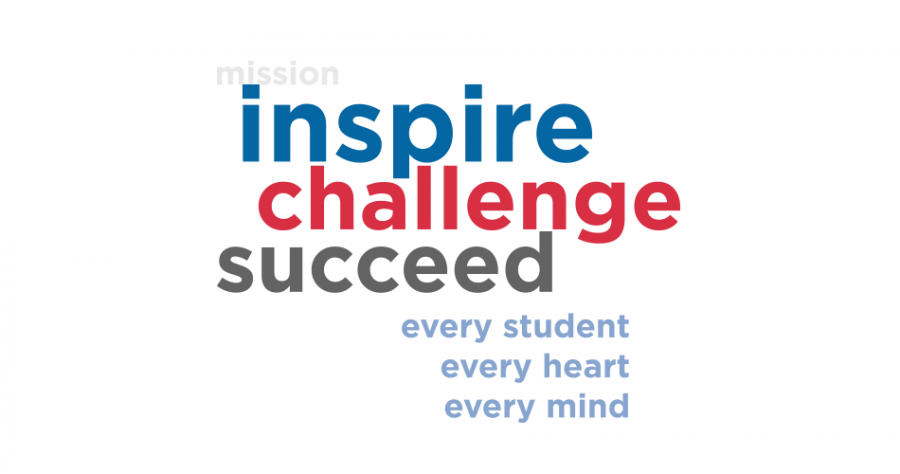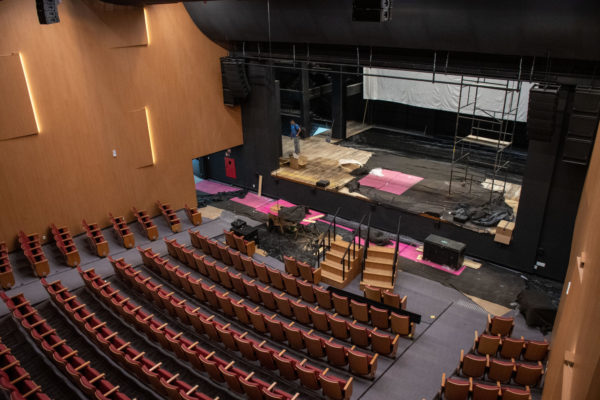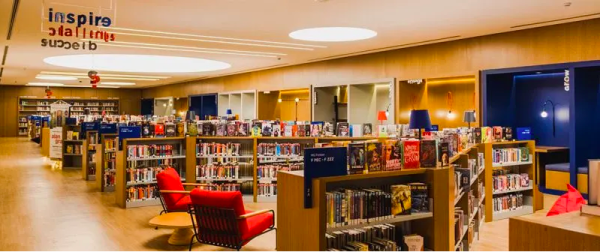An Administrative Insight: Quality over Quantity
One of the new policies implemented this school year is the shift in student activity meeting times, including the prohibition of lunch meetings for some activities. Now, the majority of extracurriculars have the same meeting time: Friday flex. This has introduced certain difficulties for high school students as they are unable to participate in activities which meet at the same time. The earlier system had allowed them to be a part of a plethora of endeavours without having any scheduling conflicts. However, was the past system promoting overexertion and taking student wellness for granted? To find out more regarding the reasoning behind the implementation of this new extracurricular policy, The Talon interviewed the high school Vice-Principal, Ms. Kirsty Wilkinson.
The Talon: What was the reasoning behind the creation of this student activity meeting policy?
Ms. Wilkinson: As you know, there was a lot of change in administration last year. We came into school like any administration comes into school—with their own ideas about how they see things running. One of the reasons that we wanted to bring some change in this area was that we noticed how students were very stressed—they found it hard to balance their time. A lot of our students have therapists. A lot of our students burn out, trying to do too much. We know Graded is a very academically rigorous school. We have very high expectations for our students, but sometimes there needs to be a balance…[between] the academics and the non-academics. Those soft skills of managing time—those soft skills of organizing themselves—we felt from what we were hearing from counselors and from what we were seeing that students were pushing themselves to the limit. And so we looked at the schedule. We wanted to see a way that we could avoid students trying to be involved in everything. We really wanted to think about their own wellness. One of the reasons we brought it in is that we thought that if we just have activities on a Friday, students will have to make choices about which activities to take part so that they don’t have to stretch themselves to be involved in every activity. There’s also this image that students think that if they join every activity in school, it will look good on a college application. We know that’s not true. Follow your passion. Only choose two or three things to be involved in. The idea then was this: activities on a Friday would cause kids to make choices. It was all to do with wellness.
The Talon: What are the benefits of students limiting themselves to fewer activities?
Ms. Wilkinson: I think student well-roundedness and character building don’t just come from one particular feature. Students should be doing activities that they enjoy, and not just for a college résumé. By doing those activities in themselves, they get to hang out with their friends, they get to feel valued, they get to build character, they get to build resilience. But that’s not enough. I don’t think reducing activities will make them well balanced. No, I think that’s one feature. I think another feature is giving kids tools to develop soft skills such as managing time, resilience, not giving up when things get hard. Resilience isn’t something that you’re naturally born with. You have to nurture it. That’s where I’m thinking of how the grade level leaders can work as a team and how the Student Council can work on particular issues that the grades face. I see these changes that we are creating as tools to help kids develop character, and be good at time management, to be able to be resilient. The activities portion is just one piece of it.
I also want to mention that we’re an inclusive school. We take in students who have different abilities and we should be celebrating students who go from a grade 4 to a grade 5. Their growth, academically, in a school could be far more impactful for that child than a child who keeps getting 7s. Not that I’m wanting to encourage a 4, I just want us to celebrate kids who have abilities in many different areas and not just focus on the academics.
The Talon: Some students have had severe scheduling conflicts even with the very few activities that they take part in because they meet during the same time. Others are very passionate and involved in many extracurriculars and consequently alternate between activity meetings that happen at the same time. This has caused additional inconveniences for the students. What would you say to address this issue?
Ms. Wilkinson: Mr. Switzer and I have been discussing this…. We are aware that in fact we need to review what we’re doing. When we look at the activities on that Friday flex, out of 394 students, we only have roughly 60 students participating at that time. And so, if our idea was to have kids all be involved in activities on a Friday flex, it’s not working because we don’t have very many involved. We’re reviewing it because we think that it’s not working to get everyone involved in something that’s activity-based on a Friday flex. So, we’re looking into opening Tuesday flex as well. I think if we open Tuesday flex as well as Friday flex, that will enable those students to not feel as if they have no choice. That would take place in the beginning of the second semester.
The Talon: Should this be a topic of discussion between the students and the Student Council in order to create a more flexible policy?
Ms. Wilkinson: I think so, and I think that’s what we’re trying to do. Our goal is that we want to build greater connection, greater relationships with students. As I said before, Graded is a very academically rigorous school, and academics play a huge role in our school. But we also feel that we want to build relationships with our students so that those relationships aren’t just about academics but also about social and emotional needs. This is not something new to Graded… the focus on social and emotional needs. It’s a very popular thing that’s happening many national and international schools in today’s world because there is a need with the pressure that the students are under—the social and emotional element is missing in schools. With mindfulness, there is the opportunity for students to have a mindfulness room which the Student Council has proposed and Ocki and I are both really and seriously looking into. The social and emotional element is as important, if not more important, than the academic. If a student is not emotionally and socially sound, that could impact their learning academically. So with that in mind, we then thought that in order to get students to feel that the world is not on their shoulder, they need a mentor. They need someone that they can connect to—an adult that is caring.
Now, you may be a fortunate student that you’re in a classroom and you have a caring adult that you have a good relationship with—but that’s not for all students. Our idea during the flex period was to introduce this opportunity to have community time. This year we’re piloting it because we’re not sure, but the idea as we advance it is to have at least two community time sessions with students per week where students get to connect in small groups with one adult. And that might not necessarily be a teacher that teaches them. The goal is to connect, to go to someone other than just the counselors for support.
For discussions, we want to build a community between students and the grade level. And that is why we introduced the grade level leaders. We wanted these grade level leaders to help shape grade level. In 9th grade for example, if there was a need to discuss an issue, they could come together with their grade level leader who would help guide them. And similarly for 10th, 11th, and 12th grades. In addition to that, we also set up a community building team which is a bunch of teachers who get together to look at how to build relationships in the classroom. Teachers could stand at the door and greet students as they walk in, celebrate birthdays, have routines and rituals in the classes because we find from the research that students feel much safer and secure and more willing to put their hand up and participate when they feel they are protected and cared for in the classroom. It’s not just “get your books out and do this activity.” It’s more about “it’s so and so’s birthday on Sunday so let’s celebrate!”
So we have that community building, team building, and that connection in the classroom on top of the academics. We have the grade level leaders guiding the opportunity to mould a grade level to be connected and united, and within that, we have a mentor that the kids can go to in small groups. This is all together under the umbrella of meeting social and emotional needs. The idea then is that the grade level leader works with the grade level to guide the grade level representatives from the Student Council and eventually empower them enough so that the grade level leaders can slowly withdraw. The Student Council can then take ownership and empower the students to organize things within grade levels. We want you to come to school as a student not only for the academics but also for the other things that make school fun.
At the heart of all of these new ideas is genuine student happiness. You are the center of our life here in school. And so we want happy students. We want happy and healthy students. Yes, we want students to get 7s on their report cards and go to the best colleges, but we essentially want happy and healthy students. In order for us to do this, we have created the grade level leaders who are not just content teachers, they are teachers who care. We have created a community building team. And we have created the Student Council. The idea is that each one builds relationships and makes our students happy and healthy. Each group is committed to making students happier ranging from the environment of a classroom, to the grade level, and to the connection with the Student Council. Everything inherently connects to the social and emotional needs of the students which I think for so long have not been at the forefront of Graded. If you stress the social and emotional element, you promote wellbeing and wellness.
Even though it might not be working right now as we want it to, it is our goal! I also think that I was too ambitious about this. It is a process and it needs time. I think we need to be patient, we need to try things out, we need to listen to all the stakeholders including the students about how to get there. We know what we want, we know why we need it, the more help we have in how to deliver it as a partnership between the student, the teacher, and the administration…. Bring it on.
Overall, these are some of the main areas related to wellness that we are working on to achieve in school:
- Mindfulness room proposed by the Student Council
- Promote time management
- Fostering character development and resilience as skills for life
- Being an inclusive school
- Celebrating all kids of varying abilities
- Celebrating growth more
- Influencing the minds of kids in a positive way
- Teaching soft skills that are so crucial for life—beyond the academics—things that don’t come from subjects but from communities, relationships, and happiness.














